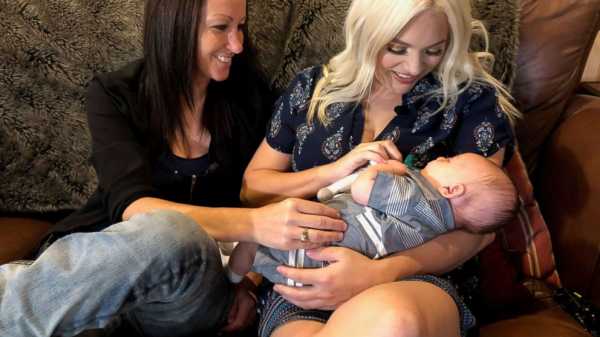
What’s the difference between “Reciprocal IVF” and “Reciprocal effortless IVF?”
Reciprocal effortless IVF is a combination of two IVF treatments that allows two women to take part in carrying their child at different stages.
Reciprocal IVF has already been practiced for many years, and allows two women to participate. This involves fertilizing the eggs from one woman with sperm, incubating them in a lab, and then transferring the embryo to their female partner.
Effortless IVF is a procedure that uses an FDA approved device called the INVOcell to assist in reproduction. Once the eggs have been retrieved from the female, the sperm and egg are placed in a test tube for 5 minutes. They are then transferred to the INVOcell device, which is moved to a woman’s vagina. The vagina acts as an incubator and carries the embryo for 5 days. The INVOcell is then removed by a doctor and the embryo is implanted into the same woman’s uterus.
While effortless IVF typically involves the same female providing the egg and carrying the embryo, Reciprocal effortless IVF involves one female providing the egg and initial incubation environment, while another carries the embryo to term in a pregnancy.
(MORE: Same-sex couple carries same baby, calls experience ‘priceless’)
Does that mean that two women can be pregnant with the same baby?
Each woman isn’t actually pregnant using this method. The first female holds the device containing the sperm and egg that becomes the embryo in her body for five days. The embryo is then transferred into the uterus of the woman who eventually gives birth. Only the second woman is actually pregnant.
(MORE: Teen anxiety and depression more likely in kids who don’t trust or communicate with parents)
What could this mean for same sex couples?
According to Dr. Doody, Bliss and Ashley Coulter were the first same sex couple that were both able to both carry the same baby. While Bliss provided the eggs and incubated the embryo for the first 5 days, it was transferred to Ashley who became pregnant and delivered their child.
“For same sex couples this opens up a whole new way to look at IVF,” said Doody.
(MORE: How redefining gender under Trump could affect transgender people’s health)
What is the cost?
Dr. Doody’s website estimates the cost of effortless IVF to be $8,000 to $10,050, which can be less expensive than traditional IVF.
What are the differences between effortless IVF and traditional IVF procedures with incubation?
This procedure is not much of a departure from regular IVF, according to Dr. Richard Paulson, a professor of obstetrics and gynecology and chief of the division of reproductive endocrinology and infertility at the University of Southern California. The main difference is that the fertilization happens inside the first woman instead of an incubator.
Sourse: abcnews.go.com
0.00 (0%) 0 votes


































